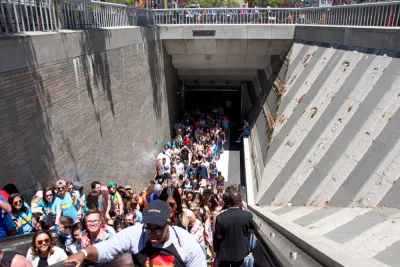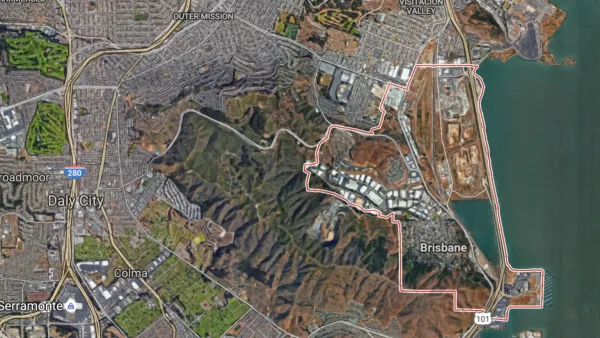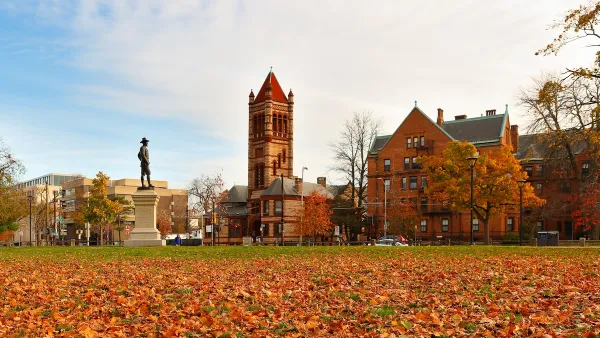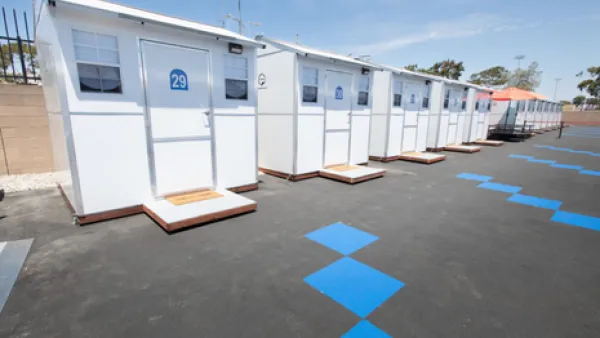Transportation and land use are being considered together at a new scale in the Bay Area, as transit oriented development pops up next to BART stations all over the region.

John King surveys the San Francisco Bay Area for examples of the transit-oriented building spree taking place near BART stations, like at MacArthur Station in Oakland:
A seven-story building with lime-green accents covers land that five years ago held parking lots. It’s part of a 385-unit apartment complex being marketed as “sleek and modern with a retro vibe ... perfect for your life on the go.” A few yards away, workers have nearly completed the concrete frame for a 24-story apartment tower that will open next spring.
In a feature story filed under "Bay Area Housing Crisis," King reports that projects have opened recently at seven East Bay BART stations, and projects at three more that could break ground soon. "Cities across the system are putting plans in place to allow bigger buildings near BART," writes King.
"Long touted by boosters as pedestrian-friendly 'transit villages,' such projects on BART-owned land are gaining traction as never before. The change is fueled by factors including the region’s incessant housing demand and a new state law that loosens development restrictions on BART property."
The idea of adding large buildings and large amounts of housing units to BART-adjacent properties has been occasionally controversial, but the recent development activity acts on planning goals set as long ago as 1972, and formalized by a formalized planning policy in 2005.
"The current policy, adopted in 2016, seeks to add up to 18,000 units by 2040, filling 250 acres at 27 stations," according to King. "It also sets a goal that 35% of these units should be reserved for below-market housing."
There is a lot more to see and consider in this big feature, with infographics, images, and soundbites that match the scale of the endeavor underway in the Bay Area.
FULL STORY: At home at BART

Analysis: Cybertruck Fatality Rate Far Exceeds That of Ford Pinto
The Tesla Cybertruck was recalled seven times last year.

National Parks Layoffs Will Cause Communities to Lose Billions
Thousands of essential park workers were laid off this week, just before the busy spring break season.

Retro-silient?: America’s First “Eco-burb,” The Woodlands Turns 50
A master-planned community north of Houston offers lessons on green infrastructure and resilient design, but falls short of its founder’s lofty affordability and walkability goals.

Test News Post 1
This is a summary

Analysis: Cybertruck Fatality Rate Far Exceeds That of Ford Pinto
The Tesla Cybertruck was recalled seven times last year.

Test News Headline 46
Test for the image on the front page.
Urban Design for Planners 1: Software Tools
This six-course series explores essential urban design concepts using open source software and equips planners with the tools they need to participate fully in the urban design process.
Planning for Universal Design
Learn the tools for implementing Universal Design in planning regulations.
EMC Planning Group, Inc.
Planetizen
Planetizen
Mpact (formerly Rail~Volution)
Great Falls Development Authority, Inc.
HUDs Office of Policy Development and Research
NYU Wagner Graduate School of Public Service




























